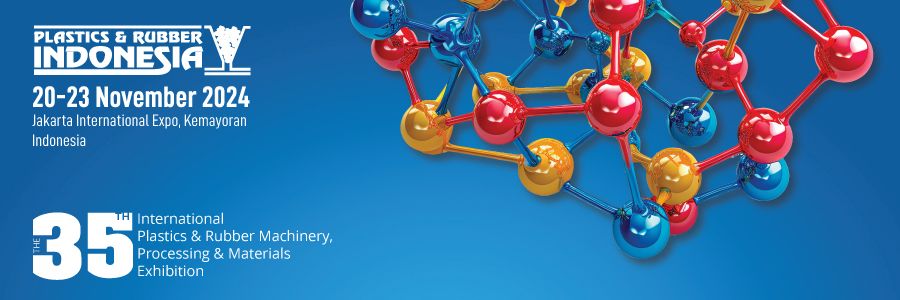The Crucial Connection Between High-Quality Liquid Silicone Injection Molds and Superior Product Quality
Time:
2025-06-08
The Crucial Connection Between High-Quality Liquid Silicone Injection Molds and Superior Product Quality
Table of Contents
- 1. Introduction
- 2. Understanding Liquid Silicone Injection Molding
- 3. The Importance of Quality Molds in Manufacturing
- 4. Factors Influencing Mold Quality
- 5. The Impact of Mold Quality on Product Quality
- 6. Best Practices for Silicone Mold Manufacturing
- 7. Case Studies: Success Stories of Mold Quality Improvement
- 8. The Future of Silicone Injection Molding and Product Quality
- 9. Frequently Asked Questions (FAQs)
- 10. Conclusion
1. Introduction
In the highly competitive world of manufacturing, particularly in sectors reliant on liquid silicone rubber (LSR), the quality of the molds used in production can mean the difference between success and failure. Liquid silicone injection molding (LSIM) is a sophisticated process that allows for the creation of intricate and durable products, but the foundation of this process lies in the quality of the molds. This article aims to explore and elucidate the relationship between high-quality liquid silicone injection molds and the resultant product quality, highlighting key factors that contribute to successful manufacturing outcomes.
2. Understanding Liquid Silicone Injection Molding
Liquid silicone injection molding is a cutting-edge manufacturing process that uses high-performance silicone materials to produce components with exceptional flexibility, durability, and resistance to extreme temperatures. This method involves several stages, including the preparation of raw silicone, injection of the silicone into molds, curing, and demolding.
2.1 The Process Explained
The process itself begins with **preparation of the silicone material**, which is often done by mixing two components: silicone base and curing agent. Once mixed, the silicone is injected under pressure into a pre-designed mold cavity.
After the injection phase, the silicone is allowed to cure, which can take place within the mold, ensuring that the finished product retains the precise shape and detailing required.
Finally, the mold is opened, and the finished silicone part is removed. This entire process can be automated, allowing manufacturers to achieve high volumes of production while maintaining consistency and quality.
3. The Importance of Quality Molds in Manufacturing
The crucial role of mold quality cannot be overstated. High-quality molds ensure:
- **Precision**: Accurate dimensions and surface quality, resulting in products that meet specifications.
- **Durability**: Molds that withstand repeated use without degradation.
- **Efficiency**: Reduced cycle times and minimized waste during production.
3.1 The Cost of Poor Quality Molds
Utilizing subpar molds can lead to defective products, increased rework, and significant financial losses. Companies might find themselves facing delays due to equipment failures or substandard outputs that fail quality inspections. In contrast, investing in quality molds pays dividends in terms of reliability and performance.
4. Factors Influencing Mold Quality
Numerous factors contribute to the overall quality of liquid silicone injection molds. Understanding these factors can help manufacturers choose the right mold-making strategies.
4.1 Material Selection
The choice of mold materials is paramount. Metals like aluminum are favored for their thermal conductivity and durability. Steel molds, while more expensive, provide longevity and precision.
4.2 Design Considerations
The design of the mold itself, including the complexity of the geometry and the incorporation of features such as **draft angles and vents**, impacts the ease of production and the quality of the final product.
4.3 Manufacturing Techniques
Advanced manufacturing techniques, such as CNC machining and 3D printing, facilitate the creation of intricate mold designs while maintaining high precision levels.
4.4 Maintenance Practices
Regular maintenance of molds ensures they remain in excellent condition, which directly influences production efficiency and product quality.
5. The Impact of Mold Quality on Product Quality
The quality of the molds used in production has a direct correlation with the quality of the finished products. Here are several ways in which mold quality affects product outcomes:
5.1 Surface Finish
High-quality molds yield parts with better surface finishes, which is crucial in applications where aesthetics matter, such as consumer goods and medical devices.
5.2 Dimensional Accuracy
Molds built to high standards ensure dimensional accuracy, meaning that products will fit together flawlessly in assembly, reducing the need for extensive post-processing.
5.3 Consistency
Quality molds produce consistent results across multiple cycles, minimizing variations and ensuring that every product meets quality control standards.
5.4 Performance Characteristics
The material properties of the silicone parts—like tensile strength and thermal stability—are enhanced with high-quality molds, allowing for better performance in demanding applications.
6. Best Practices for Silicone Mold Manufacturing
To achieve optimal results in liquid silicone injection molding, manufacturers should adhere to the following best practices:
6.1 Invest in Quality Materials
Choosing high-quality materials for both the molds and the silicone itself is critical. While it may be tempting to cut costs, the long-term benefits of quality materials far outweigh the initial savings.
6.2 Utilize Technology
Incorporate the latest technologies in mold design and manufacturing, such as computer-aided design (CAD) and computer-aided manufacturing (CAM), to enhance precision and efficiency.
6.3 Conduct Regular Quality Checks
Implement a rigorous quality control system throughout the mold-making process to identify defects early and make necessary adjustments.
6.4 Train Your Staff
Ensure that all personnel involved in the mold-making process are adequately trained in both the technical and operational aspects, fostering an environment of quality awareness.
7. Case Studies: Success Stories of Mold Quality Improvement
To illustrate the significance of high-quality liquid silicone injection molds, we will explore several case studies that demonstrate how investments in mold quality have led to substantial improvements in product outcomes.
7.1 Case Study 1: Medical Device Manufacturer
A leading medical device manufacturer faced challenges with product failures attributed to mold quality issues. By investing in high-quality steel molds and implementing a robust maintenance program, they achieved a **30% reduction in defect rates** and increased production efficiency.
7.2 Case Study 2: Automotive Component Producer
An automotive parts supplier transitioned from aluminum to high-grade steel molds. This change resulted in enhanced durability and product performance, leading to a **20% increase in client satisfaction** due to reduced recalls and warranty claims.
7.3 Case Study 3: Consumer Goods Company
A company specializing in silicone kitchenware improved their sales and market reputation by upgrading their molds. As a result, they experienced a **40% boost in product quality ratings** as reported by customers.
8. The Future of Silicone Injection Molding and Product Quality
As technology advances, the future of liquid silicone injection molding looks promising. Innovations such as **smart manufacturing** and **additive manufacturing** are poised to revolutionize mold production. These technologies allow for even greater customization and efficiency, ensuring that manufacturers can meet the evolving demands of their markets.
9. Frequently Asked Questions (FAQs)
9.1 What materials are best for liquid silicone injection molds?
High-grade aluminum and steel are commonly used for their durability and thermal properties.
9.2 How can I improve the quality of my silicone products?
Investing in quality molds, using high-grade materials, and implementing strict quality control measures can significantly enhance product quality.
9.3 What are the common defects in silicone molded products?
Common defects include air bubbles, surface imperfections, and dimensional inaccuracies, which can often be traced back to mold quality.
9.4 How often should molds be maintained?
Mold maintenance should be conducted regularly, ideally after every production cycle or at least quarterly, depending on usage.
9.5 What is the role of technology in improving mold quality?
Technology aids in precision design, manufacturing efficiency, and quality control, allowing for the production of high-quality molds that yield superior products.
10. Conclusion
In conclusion, the relationship between quality liquid silicone injection molds and product quality is undeniably strong. By understanding the intricate dynamics of mold quality, manufacturers can make informed decisions that bolster their production processes and enhance product outcomes. Investing in high-quality molds not only paves the way for superior product quality but also assures long-term profitability and competitiveness in the marketplace. As we look to the future, embracing technological advancements and adhering to best practices will ensure that manufacturers remain at the forefront of the liquid silicone injection molding industry.
RELATED NEWS












